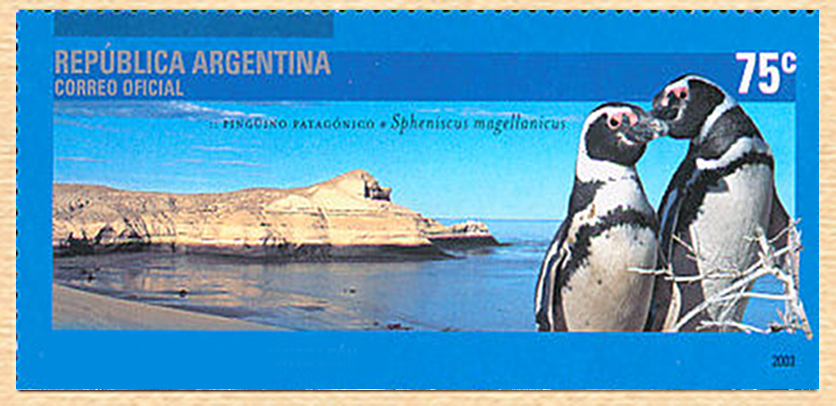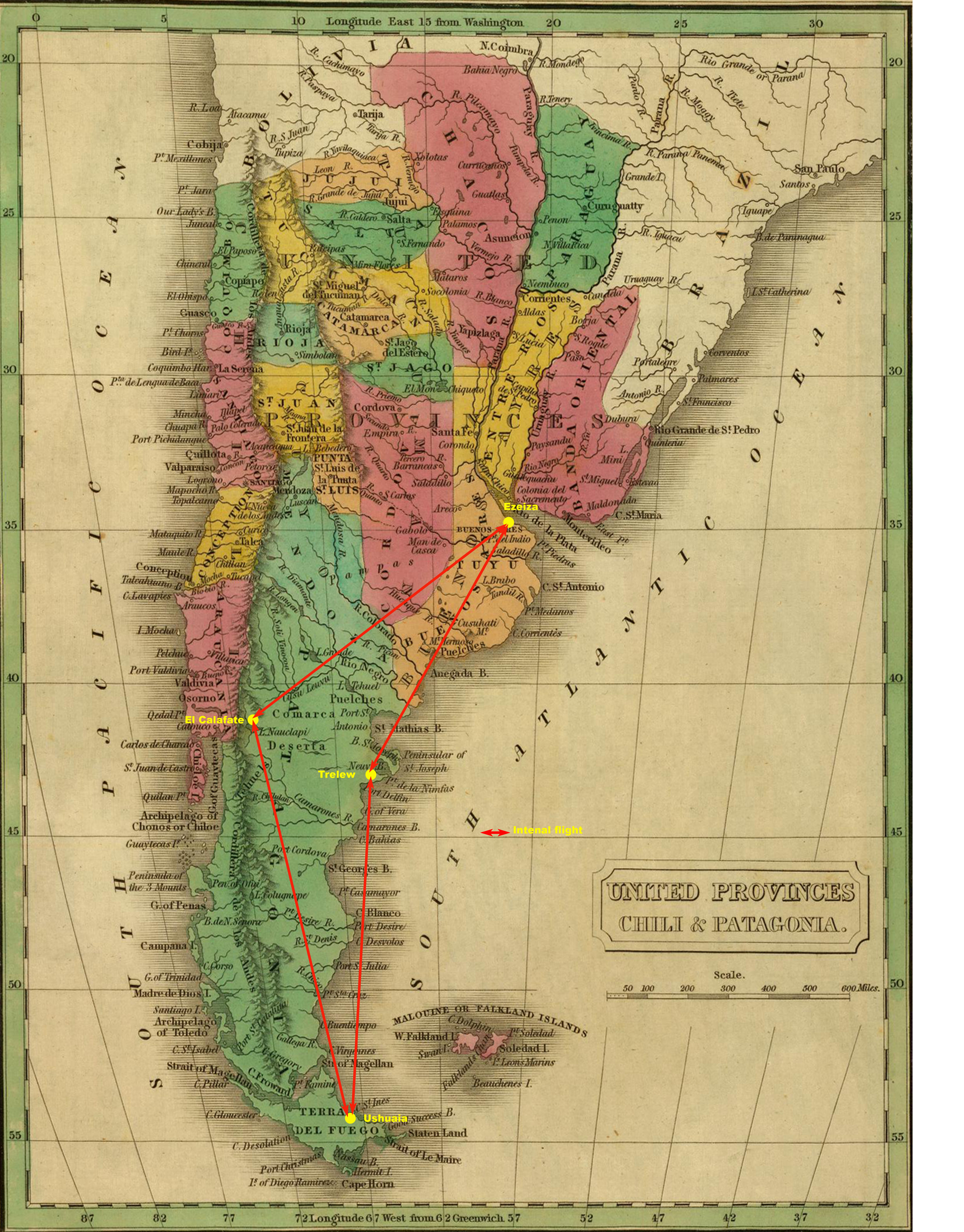
-
Transport to / from UK and any overnight stay that may be involved, , travel insurance, drinks and any items of a purely personal nature. Internal flights.
Patagnia is one of the most fantastic birdwatching areas in South America. Birdwatching through beaches, rivers, swamps, riverine forest, rolling sandy Patagonia is a great introduction to the South American birdlife. Easy walkigs just for birding.
Patagonia is a land of vast, diverse, natural terrains that blend together perfectly, landscapes which range from mountains to lakes and from these magnificent scenes to the enormous steppe region. The surroundings radiate a singular harmony, and this exquisite biological richness provides the ideal habitat for distinctive birds, such as the Andean condor, which have made it their home. Patagonia is a special place for birdwatching and photographic safaris, as we take advantage of the grandeur this southern part of the continent offers us.
I’m not sure what the second most visited spot is in El Calafate, Argentina, after the UNESCO world heritage-listed Los Glaciares National Park, home to the Perito Moreno Glacier. If it’s not, it should be the Laguna Nimez Municipal Reserve, or Reserva Municipal, a richly diverse sanctuary that provides remarkably easy access to a phenomenally wide array of Andean and Patagonian birdlife.Framed by the southern shores of Lago Argentino, the country’s largest freshwater lake to the west and snow-capped distant Andean mountains peaks to the north and east, the panoramic landscapes are dreamy, incorporating marshland, beaches and dunes into its 35-hectare expanse. All that just a kilometer or so from El Calafate’s busy town center, making this one of the finest easily-accessible birding areas you’re likely to come across anywhere.
On the Argentine side of Patagonia, the Valdés Peninsula is renowned for its large population of marine wildlife but with over 180 different bird species migrating to the peninsula or living here throughout the year, it’s also one of the most important birding destinations in Argentina.In Ushuaia there are good spots along the coast to find Kelp Goose, Ashy-headed Goose, Flying and Flightless Steamer-Duck, Magellanic and Blackish Oystercatchers, and Dolphin Gull among others. We will be able to have excellent views of these birds. Visiting the nearby forest trails we will have chances for Austral Blackbird, White-crested Elaenia, Austral Negrito, Long-tailed Meadowlark and others. It also worth a visit to Bahia Encerrada Urban Reserve, where Magellanic Snipe breeds.
The wealth and diversity of landscapes surrounding El Chaltén make it a fantastic destination for bird lovers. The National Park Los Glaciares has, according to the last census, 10% of the species found in Argentina, this signifies 1% of the world’s species. What is also important are the birds endemic and special to the area, and that are highly regarded, like the Andean Condor, the black chested buzzard eagle, the torrent duck, the austral parakeet (the most southerly in the world), the Magellanic woodpecker (the largest of the Americas), to name but a few
 Day 1: Arrival at Bueno Aires ( EZE ) International airport. Depending of the time of arriving, take internal flight to El Calafate ( FTE ), where the tour stats and we can arrive in the middle of the day. There we will collect our rental vehicles and we will go to our accommodation, Hotel Meulen Hosteria, with breakfast included. The last hours of the day we will visit the Laguna Nimez Reserve, next to El Calafate one of the best places in the country to observe and photograph pink flamingos.
Day 1: Arrival at Bueno Aires ( EZE ) International airport. Depending of the time of arriving, take internal flight to El Calafate ( FTE ), where the tour stats and we can arrive in the middle of the day. There we will collect our rental vehicles and we will go to our accommodation, Hotel Meulen Hosteria, with breakfast included. The last hours of the day we will visit the Laguna Nimez Reserve, next to El Calafate one of the best places in the country to observe and photograph pink flamingos.
We will end the day on the shores of Lago Argentino. For taking photos, it is one of the most impressive places, as it looks like a lunar landscape with hundreds of aquatic birds on the horizon. There it is common to observe various species of interest such as Black-chested buzzard-eagle, Southern crested caracara, chimango caracara, coscoroba swan, chiloe wigeon, southern lapwing, or crested duck. Rest at Hotel Meulen Hosteria. Dinner included.
Day 2: The following morning, after breakfast, we will enjoy a guided visit to Los Glaciares National Park that will begin at 9:00 am and will end at 17:00 pm, here we will stay all morning photographing and observing the front of the Perito Moreno Glacier and its frequent detachments. The landscape is overwhelming, with the condors flying over our heads next to a forest of Lenga beech and Antarctic beech. After lunch, we will embark on a catamaran boat to navigate the waters of Lago Argentino, it is essential to visit the front of the glaciers Upsala, Perito Moreno and The Spegazzini as it provides the opportunity to photograph the glacier fronts and nearby ice fields. Return to El Calafate and rest at Hotel Meulen Hosteria. Breakfast, picnic and dinner.
Day 4: It will be worth getting up early and ascending at a comfortable pace to the viewpoint of the eagles and the condors. Here we will take advantage of the first lights of the morning to photograph Cerro Torre and all the massifs of Fitz Roy together.
The first lights on the red granitic rock creates some of the most beautiful and recognisable landscapes of
the Argentinian Patagonia.
Here we can see some birds halfway up the mountain like....
Later we will continue with our birding on the banks of the Fitz Roy river and Las Vueltas river. Here we will see different species including white-winged coots, plalleritos and raptors.Accommodation in Estancia La Quinta. Breakfast, picnic and dinner.
Day 5: Breakfast and then self-guided trekking to the Capri Lagoon, one of the most recommended by the guides of the area.
The head of the trail begins at the northern end of the town, at the end of San Martín Avenue. During the first hour the slope is somewhat pronounced - in half an hour you reach a viewpoint with a panoramic view of the valley of Las Vueltas river until you enter the valley of Salt Creek towards the mount of Fitz Roy. The Antarctic beech are becoming more and more numerous around the trail and about an hour and a half into the walk a sign on the trail shows the fork towards the Capri Lagoon (on the left) and towards Fitz Roy (right). From the lagoon you will have a unique view of Fitz Roy and its peaks.
It is the perfect itinerary to observe guanacos and mountain birds and to find traces of puma.
In the forests of Lenga beech and surrounding area we have a large community of passerines, like the yellow-bridled finch, Patagonian negrito (el austral?), cinnamon-bellied ground tyrant, white-dumped swallow, striped woodpecker, Chilean flicker and much more.
Return to El Chalten.
Return to Calafate and accommodation in Hotel Meulen Hosteria. Breakfast, picnic and dinner.
Day 6: Flight to Ushuaia.
This is the southernmost city in the world, and although it has commercial tourism, it is very attractive for wildlife and landscape photographers.
On one side there is Tierra de Fuego National Park, with its vast Lenga beech forests and its rugged coastline and the possibility to observe albatrosses and other seabirds in the Beagle Channel.
We will arrive in Ushuaia in half a day, and take the opportunity to embark on a small boat to navigate the Beagle Channel, beyond the lighthouse at the end of the world. There are several islets with important colonies of sea lions and cormorants, and with patience we will be able to photograph different species of albatross flying a few centimetres from the waves.
Return to the port.
Rest in hotel Los Naranjos. Breakfast, picnic and dinner.
Note: Ushuaia is famous for its seafood, we recommend the restaurant Kaupe, although there are many other good restaurants.
Day 7: Breakfast and travel to Bahía Ensenada, from here we will start a beautiful coastal route crossing a forest of Lenga beech and Antarctic beech, about 7 kilometres almost flat to the Lapataia.
The scenery is wild and beautiful, every few metres we will encounter the colourful cauquenes, that will provide us great photography, as well as a great variety of birds, chimango, yellow-bridled finch, condors and hopefully with luck magellanic penguins. We will be struck by the lack of fear displayed by the wildlife towards people, as well as the diversity of fauna in the region. In Lapataia is the end of the Pan-American highway that unites Alaska with Tierra de Fuego and was once considered to be the end of the world. From Lapataia we have a 2 or 3km walk to the house of the national park (name??) that has a restaurant, cafeteria and direct transport to Ushuaia. Return to hotel. Note: at the entrance to the national park there is the very popular “End of the World” train, which is an old refurbished train. Rest at hotel Los Naranjos. Breakfast, picnic and dinner.
Day 8: Visit the coastal lagoons of Ushuaia where we will observe different species of birds like different species of golden plovers and sandpipers, southern wigeons, royal cormorants, imperial and black-necked swans, different gulls, yellow-billed pintails and barzinos among many others.
Day 9: After breakfast, we must head to the impressive penguin colonies of Punta Tombo, which is about 100km south of Puerto Madryn. It is worth the trip as it is one of the most beautiful and best preserved natural spaces in the area.
We walk between magellanic penguins and guanacos, in a desert landscape near the sea absolutely full of penguin nests.
Return for lunch in Puerto Madryn and later depart for Valdes Peninsula National Park, arriving after a 1 hour trip to Puerto Pirámides, where we will stay.
Arrival at Puerto Pirámides. Entrance into accommodation and last hours of the day will be spent visiting Punta Pirámides and its colony of sea lions.
We will prepare for whale watching
Accommodation in Hospedería Paradise in Puerto Pirámides. Breakfast, picnic and dinner.
Day 10: After breakfast, we will sail to observe and photograph Southern right whale, 1 hour and a half trip, with the possibility of another trip out. The whales arrive at Valdes Peninsula from Antarctica to reproduce.
Once on land, we will walk different paths of Valdes Peninsula near Puerto Pirámides to observe different species of birds in the area such as Darwin’s rhea, Aplomado falcon, larks, camineras and monjitas amongst others. Accommodation in Hospedería Paradise in Puerto Pirámides. Breakfast, picnic and dinner.
Day 11: After breakfast, expedition to Punta Norte, to photograph a small colony of elephant seals at a short distance. We will find a rich community of birds (what birds?) in an area of great interest. Punta Norte, is one of the places where it is possible to observe orca especially with hide tide. In the afternoon we will go to Punta Cantor, natural entrance to Caleta Valdes, an excellent place for observing fauna again with the possibility of observing orca. We will also pay attention to the colonies of seabirds, especially cormorants of different species that we can observe in the area. Sunset photography from the vicinity of Puerto Pirámides and return to the accommodation. Breakfast, picnic and dinner.
Day 12: Breakfast and transfer to Trelew airport, where we will leave the vehicle and head to Buenos Aires. Arrival at Aeroparque airport and transfer by taxi to Ezeiza airport from where our intercontinental flight leaves.